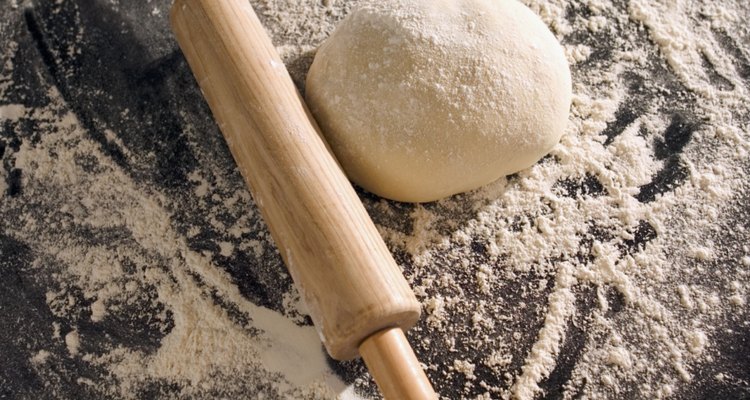
Some of the tiny, expensive loaves of gluten-free bread sold in supermarkets seem to be more "glue" than gluten-free. After one bite, your mouth feels like it's full of wallpaper paste. Still, going gluten-free doesn't have to mean giving up delicious bread, cookies, cakes and pastries -- but it might mean that the best baked products you can find come out of your own kitchen. The learning curve isn't as steep as you might think, but the first step is figuring out what to do with unfamiliar ingredients -- such as xanthan gum.
What Xanthan Gum Is and Does
Gluten proteins are the substances that make bread and pastry made from wheat flour so light and chewy. When baking gluten-free products, you'll replace wheat flour with gluten-free varieties, so you also need ingredients that replicate the soft, airy and elastic qualities of wheat. Xanthan gum, an all-natural product cultured from carbohydrates and purified, does that. As an emulsifier, it helps keep the oil and water in dough from separating. Leavening agents, which include baking powder, baking soda or yeast, cause dough to rise by generating carbon dioxide. Xanthan gum helps trap that air inside.
Xanthan Gum vs. Guar Gum
Both xanthan gum and guar gum, which is made from the seed of a plant native to tropical regions of Asia, are widely available in the baking or natural foods aisles of most supermarkets. Carol Fenster, author of 11 gluten-free cookbooks, says that both gums perform similarly in baking. In her book "1,000 Gluten-Free Recipes," Fenster provides a chart indicating how much guar and xanthan gum to use for various baked foods. In general, if your recipe calls for xanthan gum and you want to use guar gum, you should increase the quantity by 50 percent, she says. Fenster's cornbread, banana bread and focaccia flatbread recipes all specify xanthan gum, but her French bread recipe calls for both. Another gluten-free baking authority, Cassidy Stockton, prefers using guar gum for cold foods -- such as pastry fillings -- but xanthan gum for yeasted breads. Other gums are also available but not as easy to find.
Recommended Quantities
Bear in mind that these products are called "gums" for a reason. If you use too much, your baking will take on the texture of rubber. Recommended amounts depend upon what you're baking. For 1 cup of flour, use about a 1/4 teaspoon of xanthan gum for cookies; 1/2 teaspoon for cakes; and 1 to 1 1/2 teaspoons for breads. Use a blender or food processor to thoroughly mix together the oil and gum before adding it to the rest of the liquid ingredients in your recipe.
Getting Started
When starting out with gluten-free baking, choose a few recipes that appeal to you, follow them exactly, and see how you like what comes out of your oven. After you've got the basics down, you can begin experimenting with different flours and gums without the fear that your finished product will be inedible. Look for recipes from organizations and foundations specializing in celiac disease and gluten intolerance.
Related Articles
Role of Xanthan Gum in Vegan Baking
Is Nutritional Yeast Gluten Free?

What Can I Use as an Egg Substitute ...

What Is a Substitute for Potassium ...
Flour Substitute for Muffins

What Can You Use in Place of Egg Yolk ...

How to Use Guar Gum to Replace Gelatin
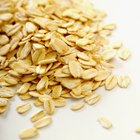
Baking With Oats Instead of Flour

Whole Wheat Pastry: Flour Substitutions

Can I Make Boxed Devil's Food Cake Mix ...

Does Benefiber Lower Cholesterol?
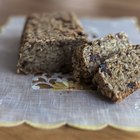
Gluten-Free Bread Without Eggs

Can I Substitute Bleached for ...
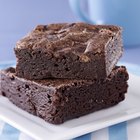
How to Replace Ingredients to Make ...
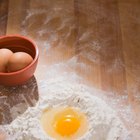
Can You Substitute Egg Beaters for Eggs ...
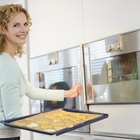
What Can Be Used Instead of Eggs for ...

Cake Emulsifier Substitute
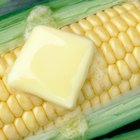
Common Food Emulsifiers
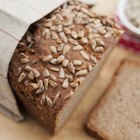
Russian Rye Bread vs. Pumpernickel

What Kind of Oil Do You Use in Brownie ...
References
- Canadian Celiac Association: In the Kitchen
- National Foundation for Celiac Awareness: Gluten-Free Food and Recipes
- 1,000 Gluten-Free Recipes: Carol Fenster
- Carol Fenster: All About Gluten-Free Food
Photo Credits
Thinkstock Images/Stockbyte/Getty Images